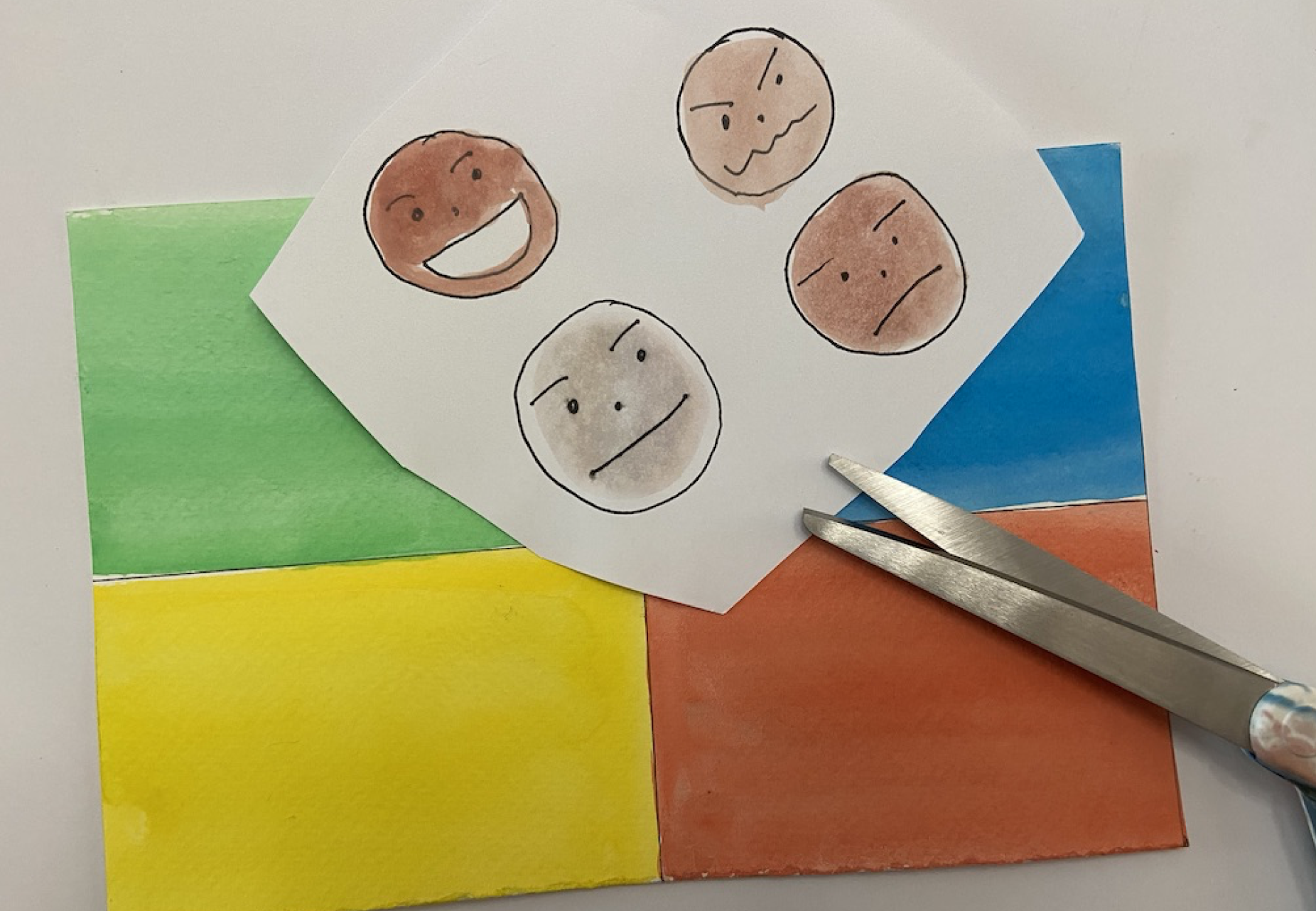I thought I would spend the season discussing emotional literacy education – Through art therapy, expressive arts, and art journaling ideas.
Over these last few years, I’ve dedicated time to developing Emotional Literacy – art training for teachers. Which supports feelings and emotions through expressive arts.
Expressive arts can open the door to process emotions in a safe and healthy manner. I have conducted research over the years and can’t wait to share these ideas in a six part newsletter. I’ll explain how art can contribute to practicing emotions.

Researchers Agree Emotion Learning Starts Early
Part 1.
Did you know you can support healthy cognitive development in children by making them aware of their own emotional intelligence?
Children can begin learning emotional cues from caregivers as early as infancy.
Researchers from the Institute of Medicine and National Research Council have made significant discoveries on how early educators can positively influence social development.
This research highlights the connection between early influences and their impact on a child’s social development. These lessons can affect a child’s biological makeup and outward behavior in their social environments. Emotional neural connections form early and fundamentally influence how children process feelings and self-regulate stress. Teaching children coping skills early is, in fact, possible through emotional literacy education.
“There is now strong evidence that early psychological and social adversities – beginning even during fetal development – can have significant short- and long-term effects on the brain’s development and the way the brain and body handle stress.
In addition to the brain, multiple systems are involved in the response to stress and can be affected by chronic adversity, including the immune system and the endocrine system.” – The Board on Children, Youth, and Families, based on the report Transforming the Workforce for Children Birth Through Age 8, The National Academies of Sciences, Engineering, and Medicine, 2015.
Art & Emotional Intelligence Connection
The great news is that art can align with emotional literacy lessons in a safe manner. Through fun, expressive art projects, children can learn to understand how they feel. They can even learn to recognize where they are on the mood scale, such as feeling irritated, mad, sad, or joyful.
Emotional literacy is among the top skills we should be focusing on in this 21st-century. Especially during our recent global social and moral crises. Teaching emotional literacy leads to good discussions about developing empathy for one another. Plus it improves our students’ overall community relationships.

Emotional Intelligence through expressive arts
What does expressive art mean?
Expressive arts refers to a holistic approach combining various forms of artistic expression. This can support children’s overall development and self-expression.
Teachers can tap into the innate creativity of their students by fostering:
- self-expression
- imagination
- feelings
- holistic development
Expressive arts engage children’s cognitive, emotional, social, and physical dimensions. Through art, music, and movement, children can express emotions and enhance their communication skills.
When it comes to teaching expressive arts, there are numerous activities to explore. Here are some of the most common expressive art ideas you can incorporate:
Art & Emotional Literacy Projects
1. Drawing and Painting: Students can express themselves visually. They can experiment with different mediums, colors, and textures. Drawing and painting can convey emotions.
2. Collage Making: Collage art involves assembling various materials. Like paper, magazine cutouts, fabric, and found objects. Students can explore themes, storytelling, or abstract concepts through collage-making.
3. Sculpture: Sculpture provides an opportunity to work with their hands in three dimensions. These sculptures that reflect their interests and emotions.
4. Printmaking: Printmaking techniques like stamping, monoprinting, produce copies of their artwork. It offers a chance to explore patterns, textures, and design elements.
5. Music and Sound Exploration: Engaging students in music and sound activities helps them develop an appreciation for rhythm, melody, and harmony. They can experiment with various instruments, create their own compositions, or engage in group music-making.
6. Dance and Movement: Teaching dance and movement helps students explore their bodies’ capabilities and express themselves through non-verbal communication. It can involve individual or group choreography, improvisation, or learning dances from different cultures.
7. Drama and Theater: Encouraging students to engage in drama and theater activities promotes self-expression, creativity, and storytelling. They can act out scenes, create their own plays, or participate in improvisational exercises.
8. Poetry and Creative Writing: Students express themselves through words. They can write poems, short stories, or engage in collaborative storytelling activities.
9. Photography and Visual Documentation: Teaching photography and visual documentation encourages students to observe the world around them. Capturing moments through a lens.
These are just a few examples of expressive art ideas. Stay tuned for more.
Love to hear your feedback.
Warmly,
Spramani



All rights reserved © 2025, Nature of Art®

No part of this blog may be used or be reproduced in any manner whatsoever including reproducing, publishing, performing, and making any adaptions of the work – including translation into another foreign language without written permission except in the case of brief quotations embodied in critical articles and reviews. Nature of Art® Publishing P.O. Box 443 Solana Beach, California 92075.



Recent Comments
[…] Fuente del artículo […]
Comments are closed.